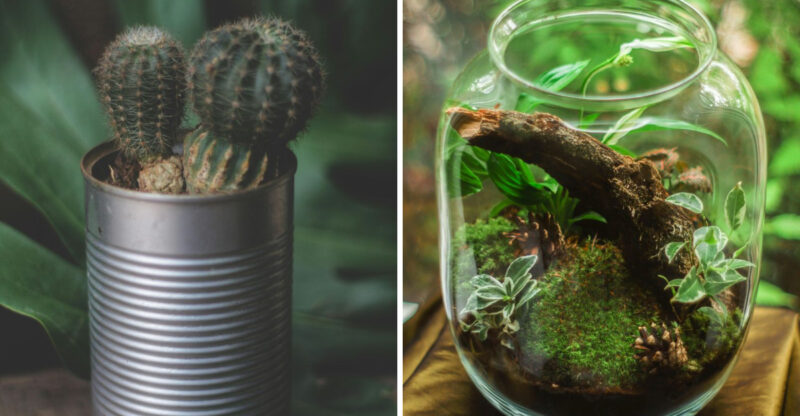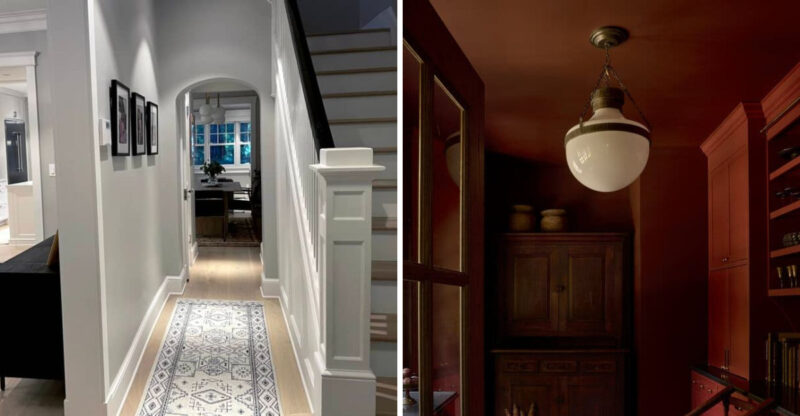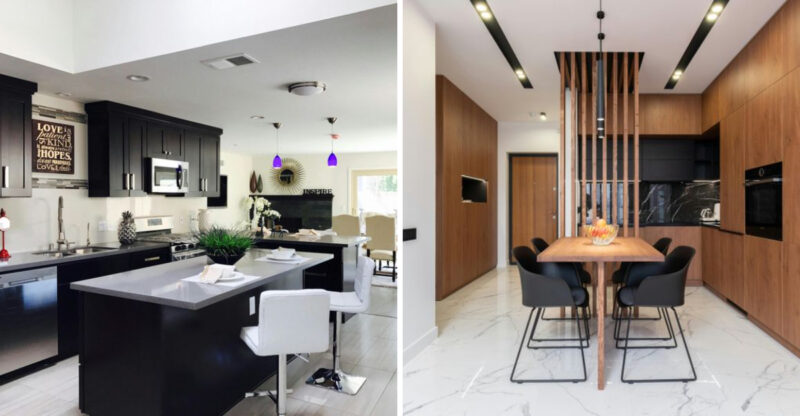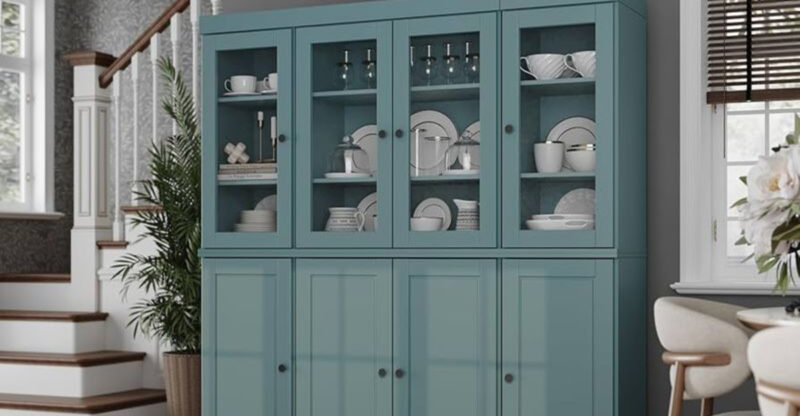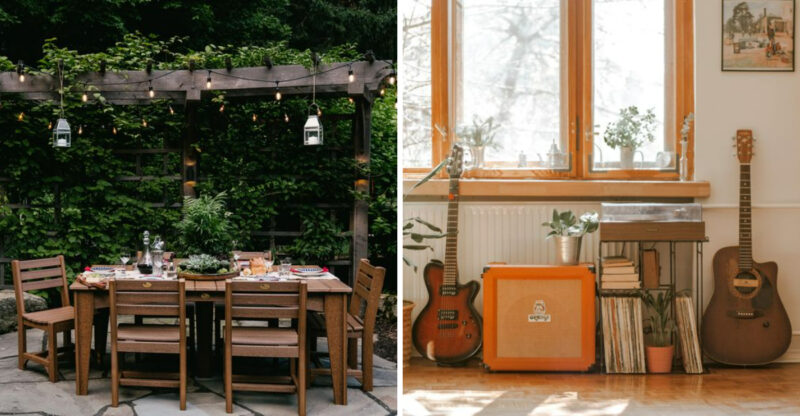20 Quick Changes To Elevate Your Living Room
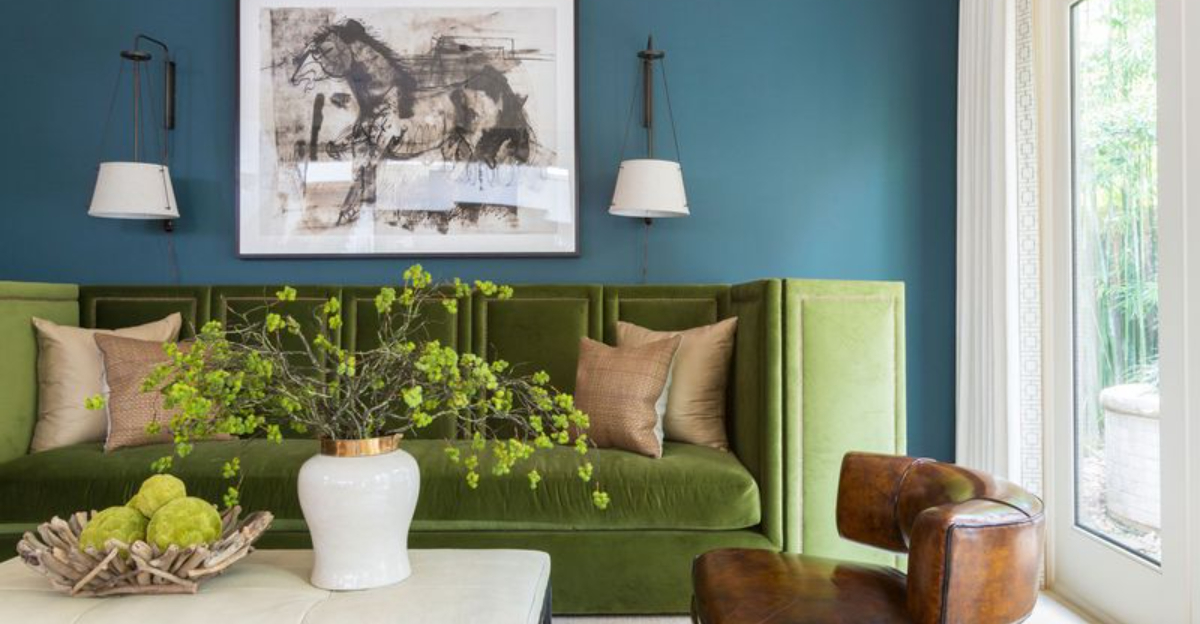
Looking to refresh your living space without a major renovation? Your living room is where you relax, entertain, and spend most of your time at home.
With just a few strategic changes, you can transform this important space from ordinary to extraordinary.
These simple tweaks won’t break the bank or take much time, but they’ll make a world of difference in how your living room looks and feels.
1. Swap Throw Pillows for Fresh Colors

Changing your throw pillows is like giving your couch a mini makeover without the hefty price tag. I love grabbing pillows in this season’s trending colors or patterns to instantly modernize my space.
Mix different textures like velvet, linen, and knits for added dimension. Try combining solid colors with geometric or floral patterns while keeping a consistent color palette.
Don’t be afraid to play with sizes too! Larger pillows (24″ x 24″) make great anchors, while smaller ones add personality. For maximum impact, I always replace all pillows at once rather than mixing old with new.
2. Add a New Area Rug

A fresh area rug can completely transform your living room’s vibe in minutes. I recently added a bold geometric rug and was amazed at how it pulled everything together!
When selecting size, remember that bigger is usually better – all furniture legs should either sit completely on or completely off the rug. Position it to define your seating area, creating a visual anchor for the space.
Materials matter too. Wool rugs offer durability and softness, while jute provides natural texture. For high-traffic areas, consider indoor/outdoor rugs that resist stains and are easy to clean without sacrificing style.
3. Hang Statement Art
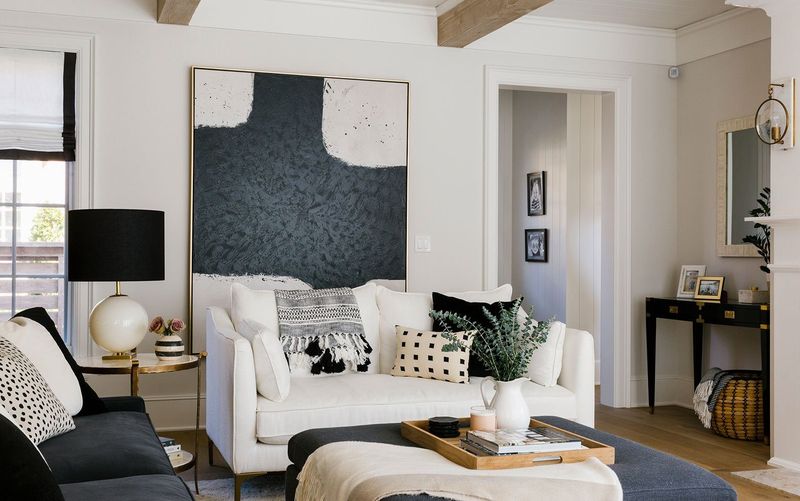
Blank walls scream for attention, and statement art answers that call beautifully. I found that one large piece creates more impact than several small ones scattered around.
Height matters tremendously – the center of your artwork should hang at eye level, approximately 57-60 inches from the floor. This creates a gallery-like presentation that draws people in.
Don’t worry about matching your art to your decor perfectly. Sometimes a contrasting piece creates wonderful tension in the room. Abstract pieces work wonderfully in traditional spaces, while vintage prints can add character to modern rooms. The most important thing is choosing something that speaks to you personally.
4. Rearrange Furniture for Better Flow

Moving furniture costs nothing but delivers dramatic results! I recently shifted my sofa perpendicular to the wall instead of against it, and suddenly my living room felt twice as spacious.
Start by identifying your room’s focal point – maybe it’s a fireplace, window view, or TV. Arrange seating to face this feature while creating conversation areas where people can easily chat. Leave at least 30 inches between pieces for comfortable pathways.
Float furniture away from walls to make rooms feel larger and more intimate. Angling a chair or placing your sofa diagonally can transform a boxy room. Remember that symmetry creates formality while asymmetrical arrangements feel more relaxed and casual.
5. Incorporate Greenery or Fresh Flowers
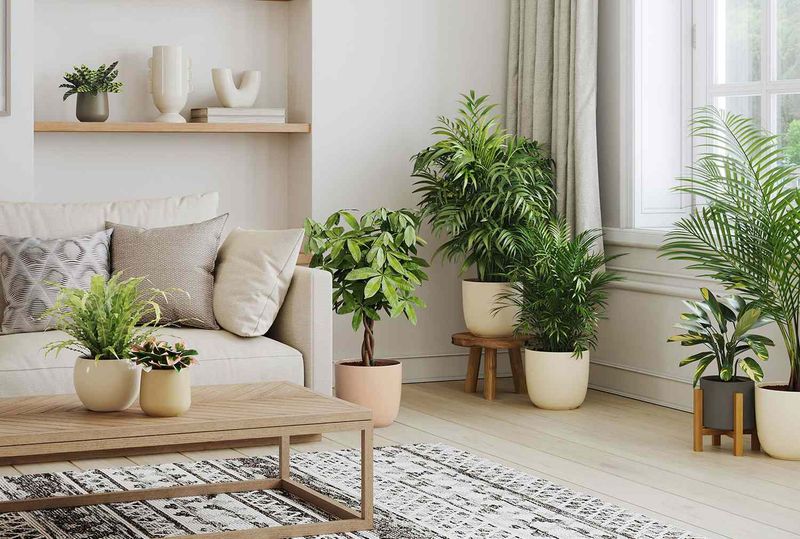
Plants breathe life into any living room – literally! I added a fiddle leaf fig to my corner, and it instantly made the space feel more vibrant and complete.
For plant newbies, try low-maintenance options like snake plants, pothos, or ZZ plants that thrive even with minimal attention. Strategic placement matters too tall plants work wonders in empty corners, while smaller varieties shine on coffee tables or bookshelves.
If keeping plants alive isn’t your strength, high-quality faux plants have come a long way and require zero maintenance. Fresh flowers also make a wonderful temporary addition – even a simple bunch from the grocery store arranged in a beautiful vase can transform your coffee table.
6. Change Lampshades for a Modern Look

Swapping lampshades is my favorite mini-makeover trick! This tiny change transforms not just the lamp but how light fills your entire room.
When choosing new shades, consider both style and function. Lighter shades diffuse more light throughout the room, while darker ones create focused, intimate lighting. Drum shades offer contemporary appeal, while pleated or tapered options complement traditional decor.
Size matters tremendously – the shade should completely hide the lamp hardware but maintain proper proportions. The shade’s diameter should be approximately 2 inches wider than the lamp base at its widest point. Don’t be afraid to mix materials either – linen creates soft light, while metal shades direct light downward for dramatic effect.
7. Add a Cozy Throw Blanket
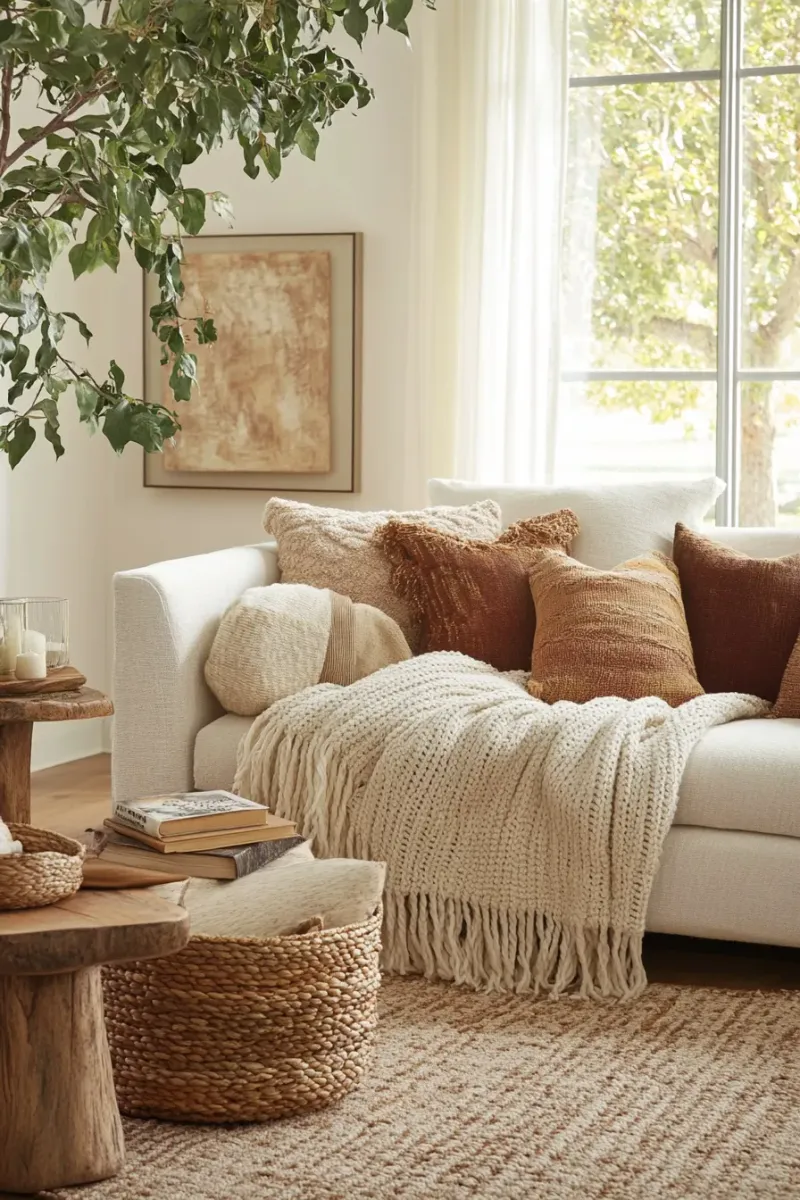
Throw blankets instantly add warmth, color, and texture to any living room. I drape mine casually over my sofa’s arm for that effortlessly chic, lived-in look that designers love.
Material choice significantly impacts both appearance and function. Chunky knits add wonderful texture, while lightweight cotton works better in warmer climates. Cashmere offers luxury, while washable synthetics stand up to pets and kids.
Consider your color strategy carefully choose throws that either complement your existing palette or add a deliberate pop of contrast. Folding techniques matter too! Try the classic thirds method for a tailored look, or the cascade drape for casual elegance. Switching throws seasonally (lighter in summer, heavier in winter) keeps your space feeling fresh year-round.
8. Display Books on Coffee Tables

Coffee table books do double-duty as both entertainment and style elements. I collect books on subjects I’m passionate about – architecture, travel, and photography – which instantly spark conversations when friends visit.
Arrangement is everything when styling these books. Create small stacks of varying heights (odd numbers work best) rather than one tall tower. Leave some breathing room between groupings and mix horizontal and vertical arrangements for visual interest.
Don’t feel limited to just books! Adding a small decorative object on top of a stack creates dimension and personality. Rotate your book collection seasonally or when you need a refresh. The key is selecting titles with beautiful covers that reflect your personal interests – they’re conversation starters as much as they are decor.
9. Upgrade Curtain Panels
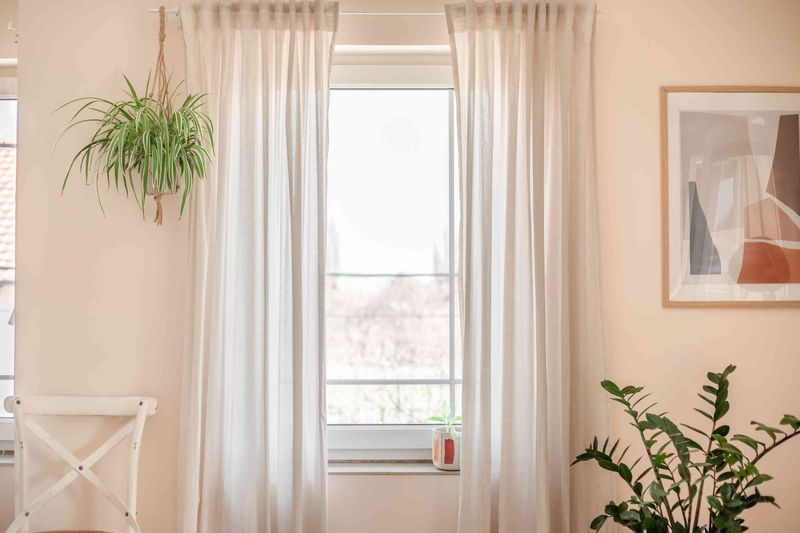
New curtains dramatically transform a room’s entire feel – I switched from short panels to floor-length drapes and couldn’t believe the difference in how grand my windows suddenly appeared!
Height placement makes all the difference. Hang curtain rods 4-6 inches above window frames (or even higher) and extend them 6-10 inches beyond each side. This trick makes windows appear larger and ceilings higher.
Fabric choice affects both aesthetics and function. Linen and cotton offer casual elegance, while velvet adds luxury and better light blocking. For a designer look, ensure panels touch the floor slightly – either “kissing” it precisely or puddling 1-2 inches for drama. When in doubt, choose simple, solid panels in a color slightly lighter or darker than your walls for timeless appeal.
10. Replace Cabinet or Drawer Hardware
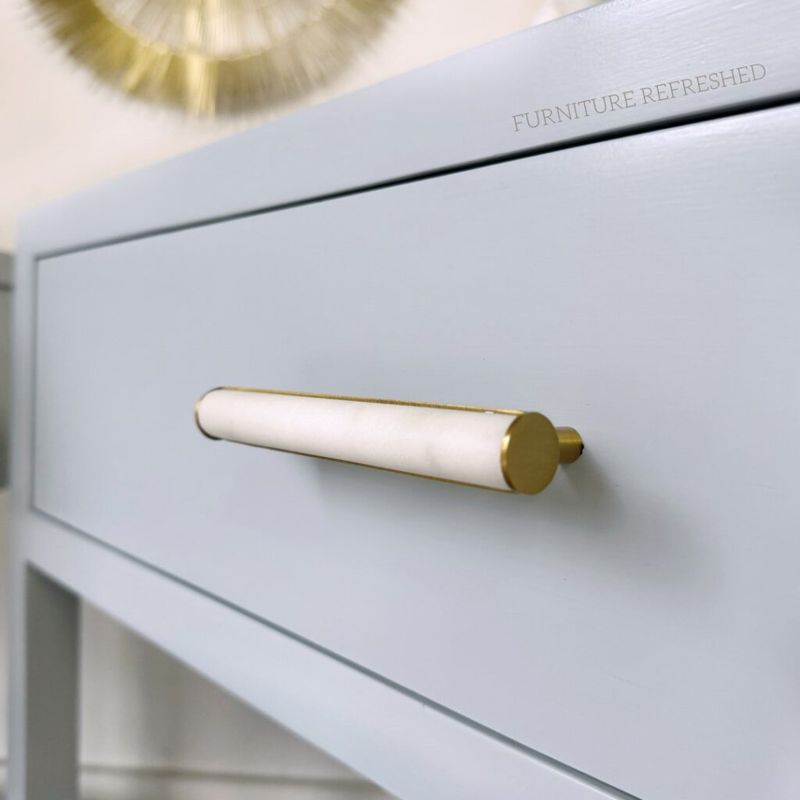
Switching out hardware is like jewelry for your furniture – small but mighty! I recently replaced the plain knobs on my media cabinet with brass pulls, and everyone asks if I bought new furniture.
Hardware stores offer endless options, but online specialty retailers provide even more unique choices. Consider scale carefully – larger pieces make bolder statements, while delicate hardware works better on smaller furniture.
Mixing metals thoughtfully creates designer appeal. Try brass knobs with black hinges, or combine silver and gold for an eclectic look. When replacing existing hardware, measure the distance between screw holes (called “center-to-center”) to ensure new pulls fit properly. Keep old hardware stored away if you rent or might want to change back later – this transformation is completely reversible!
11. Layer Different Lighting Sources
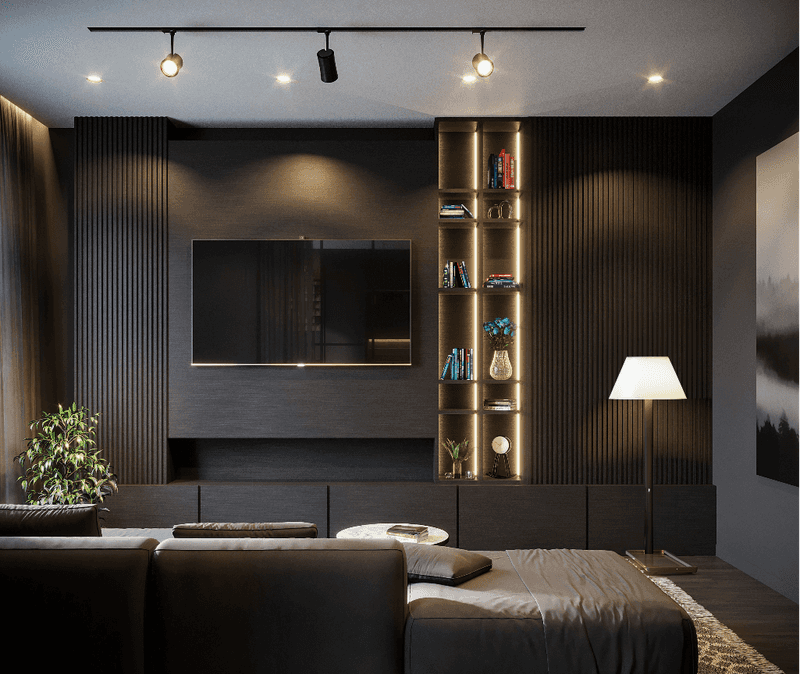
Proper lighting transforms rooms more dramatically than almost any other change. I created a lighting plan with three distinct layers – ambient, task, and accent – and my living room suddenly felt like a magazine spread!
Ambient lighting provides overall illumination through ceiling fixtures or recessed lights. Task lighting includes reading lamps or directional lights for specific activities. Accent lighting highlights architectural features or art through wall sconces or picture lights.
Height variation creates visual interest – place lights at different levels throughout the room. Adding dimmer switches gives you control over intensity for different moods and times of day. Even simply moving existing lamps to new positions or grouping them differently can dramatically change how your space feels without spending a dime.
12. Introduce Decorative Trays for Organization
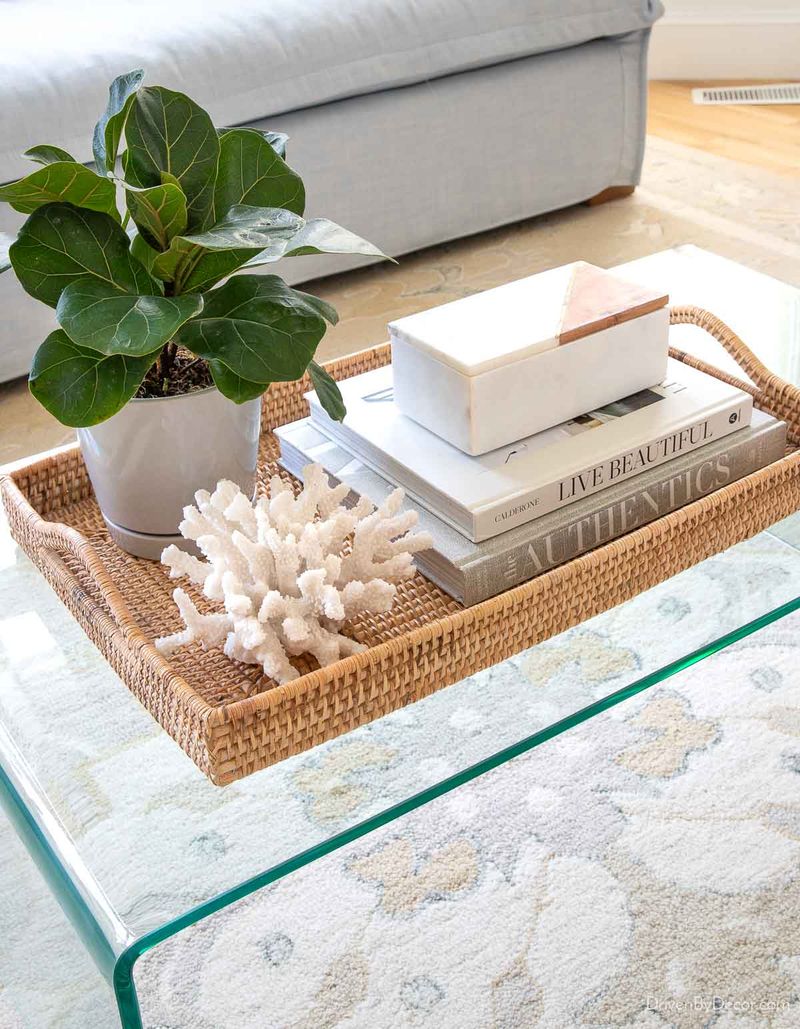
Decorative trays magically transform scattered items into curated collections! I placed a large wooden tray on my coffee table to corral remotes, coasters, and small decor pieces, instantly making my space look more intentional.
Material choice significantly impacts the style statement. Brass or mirrored trays add glamour, while wooden ones bring warmth. Lacquered trays in bold colors create modern pop, and woven versions add natural texture.
Think beyond coffee tables too. Use trays on ottomans to create stable surfaces for drinks, on side tables to group small objects, or on consoles to display perfume bottles or bar accessories. The secret is creating thoughtful groupings rather than random clutter. Leave some empty space within each tray for a curated rather than crowded look.
13. Hang Mirrors to Reflect Light
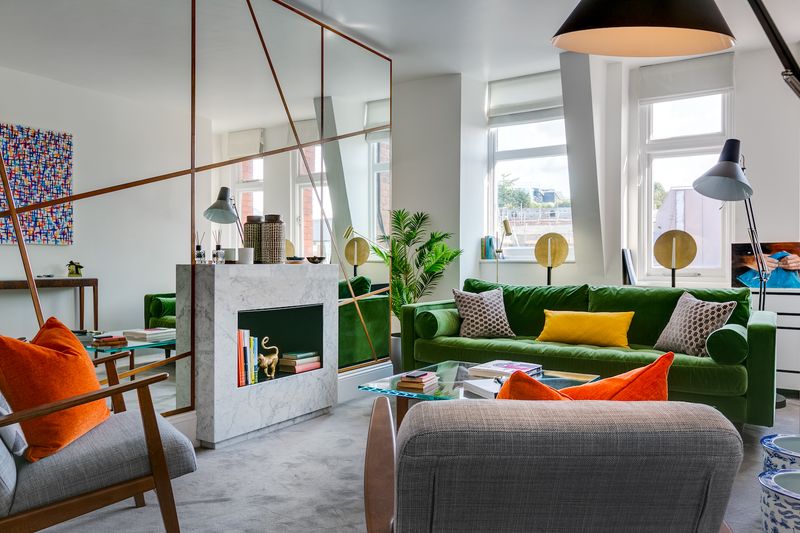
Mirrors perform magic in living spaces, doubling light and visually expanding rooms. I positioned a large mirror opposite my window, and suddenly my room felt twice as bright and spacious!
Strategic placement maximizes impact. Hanging mirrors where they’ll reflect natural light or attractive views creates the illusion of additional windows. Consider what the mirror will reflect before finalizing its position you want it capturing beautiful elements, not clutter.
Shape affects the overall feel dramatically. Round mirrors soften rooms with many straight lines, while rectangular ones complement traditional spaces. Oversized mirrors make bold statements, while groupings of smaller mirrors create artistic installations. For maximum light reflection, choose mirrors with minimal frames or beveled edges that catch and scatter light throughout your space.
14. Use Scented Candles or Diffusers
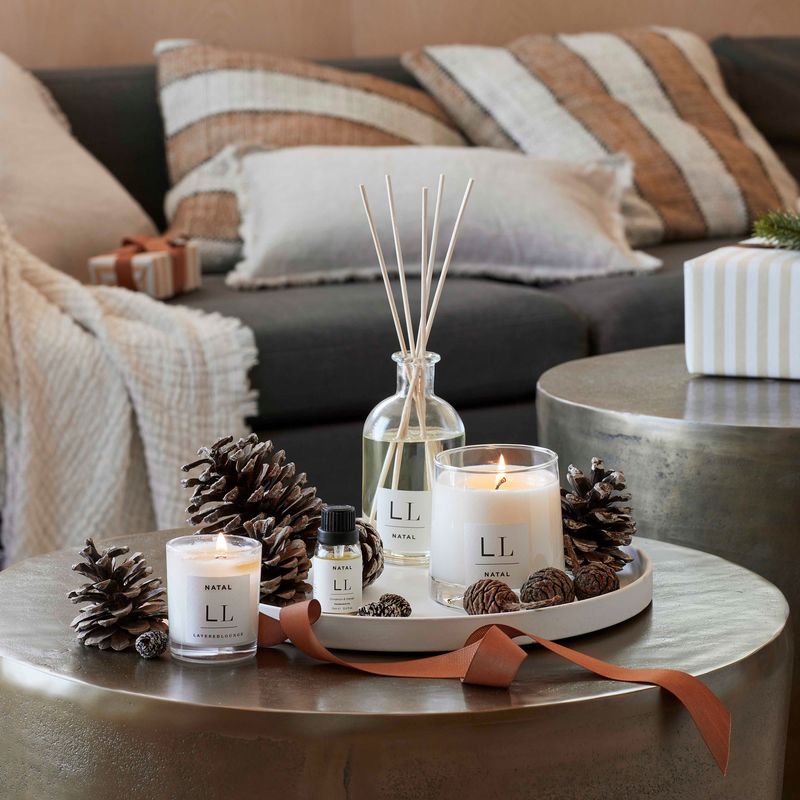
Scent creates atmosphere that visuals alone can’t achieve. I rotate fragrances seasonally – fresh linen in spring, beachy scents in summer, spiced aromas in fall, and pine or cinnamon during winter months.
Strategic placement enhances effectiveness without overwhelming. Position diffusers near entryways for immediate impact when guests arrive. Candles work beautifully on coffee tables or mantels where their flickering light adds ambiance.
Vessel choice matters as much as scent since these items serve as decor even when not in use. Look for containers that complement your style – minimalist ceramic diffusers for modern spaces or vintage-inspired candle holders for traditional rooms. Layering complementary scents (like vanilla and sandalwood) creates signature blends unique to your home, making your living room instantly recognizable and welcoming.
15. Edit Out Clutter and Excess Décor

Sometimes the most impactful change comes from removing things rather than adding them! I recently cleared my surfaces of accumulated knickknacks, keeping only pieces with meaning or beauty, and my room immediately felt more peaceful.
Start by removing everything from surfaces, then selectively return only items that serve a purpose or bring genuine joy. Group remaining objects in odd numbers (threes and fives work wonderfully) with varying heights for visual interest.
Apply the designer’s 80/20 rule – leave 80% of surfaces empty and use only 20% for decorative items. This creates breathing room that makes spaces feel intentional rather than crowded. Remember that negative space is actually positive in design – those empty areas allow your special pieces to shine rather than compete for attention.
16. Showcase a Collection of Objects

Thoughtfully displayed collections instantly add personality to living spaces. Whether vintage cameras, ceramic vessels, or art books, grouping similar items creates visual impact that random objects can’t achieve.
Containment is key to preventing a cluttered look. Use shelves, cabinets, or trays to define collection boundaries. Vary heights and depths within the grouping for dimensional interest, placing larger items toward the back and smaller ones in front.
Color cohesion ties collections together beautifully. Items in similar color families create harmony even when their shapes differ. For eclectic collections, consider painting all pieces the same color for striking uniformity. Remember that negative space around and between grouped items allows each piece to shine while giving viewers’ eyes places to rest.
17. Update Picture Frames

Fresh frames transform ordinary photos into gallery-worthy displays! I recently switched my mismatched frames to a coordinated black set, and my family photos suddenly looked like a professional installation.
Consistency creates sophisticated impact. Choose frames in the same finish (all black, all white, all wood) or material (all metal, all wood) for a cohesive look. Alternatively, maintain the same color but vary textures for subtle interest.
Mat color dramatically affects how images appear. White mats create breathing space around photos and work with any frame color. For a designer touch, try oversized mats with smaller photos – the extra white space creates dramatic gallery appeal. When hanging, maintain consistent spacing between frames (2-3 inches works well) and align them by their centers rather than edges for a polished, professional appearance.
18. Add Textured Accents like Baskets

Texture adds dimension that color alone can’t achieve. Baskets are my go-to for adding natural warmth while solving storage dilemmas at the same time.
Placement possibilities are endless. Large floor baskets corral throw blankets or magazines beautifully. Wall-mounted basket collections create unexpected artistic installations. Small table baskets organize remotes or other small items that tend to create clutter.
Material variation adds depth to your design. Mix seagrass with water hyacinth or rattan with jute for subtle contrast while maintaining a cohesive natural palette. For maximum impact, choose baskets with interesting weaving patterns or unexpected shapes rather than basic styles. The combination of visual interest and practical function makes baskets the perfect double-duty accessory for elevated living rooms.
19. Paint an Accent Wall

An accent wall delivers dramatic impact with minimal effort. I painted the wall behind my sofa in a deep teal, and it instantly became the focal point that anchored my entire room.
Wall selection matters tremendously. Choose the wall that naturally draws attention when entering the room – often behind the sofa or fireplace. Avoid walls with too many doors or windows that interrupt the color.
Color psychology influences mood significantly. Blues and greens create calm, while yellows and oranges energize. Rich, saturated colors make the wall appear closer, while lighter hues recede. For a subtle approach that still adds dimension, try painting your accent wall just 2-3 shades darker than surrounding walls. This creates sophisticated depth without dramatic contrast.
20. Place a Unique Piece of Furniture as a Focal Point

Statement furniture creates instant character in living rooms. I recently replaced my standard coffee table with a vintage trunk, and it completely transformed the personality of my space.
Unexpected pieces create the most impact. Consider a boldly upholstered chair, a distinctive side table, or a uniquely shaped ottoman. Position these statement pieces where they’ll be immediately visible when entering the room.
Scale matters tremendously with focal furniture. The piece should be substantial enough to command attention without overwhelming the space. If using color or pattern to create impact, keep surrounding furniture more neutral to allow your statement piece to shine. Remember that uniqueness doesn’t always mean brand new – vintage or antique pieces often make the most interesting focal points, adding character that mass-produced items simply can’t match.
21. Switch Out Cabinet Doors for Glass Fronts
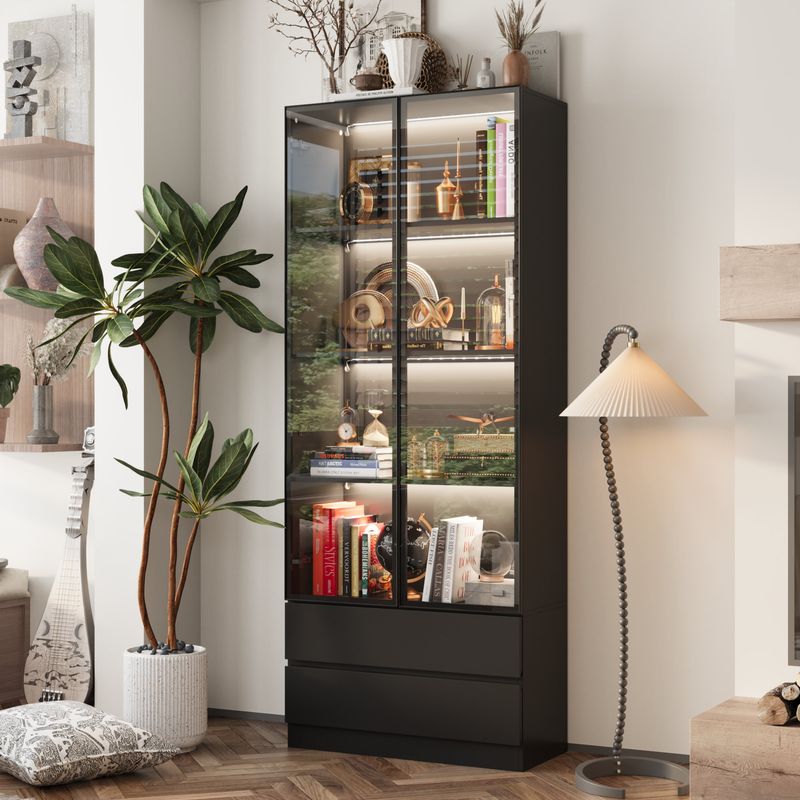
Glass-front cabinets instantly elevate living rooms while showcasing cherished items. My media cabinet transformation from solid to glass doors made my space feel more custom and architecturally interesting.
This project offers more flexibility than you might think. Remove doors entirely for open shelving, replace with ready-made glass doors, or insert glass panels into existing frames. For DIY options, consider removing center panels and installing plexiglass for an afternoon project.
What you display becomes crucial with glass fronts. Organize contents with color coordination in mind – grouping books by color creates cohesive visual appeal. Alternatively, showcase collections against a painted interior background for dramatic effect. Add small puck lights inside cabinets for evening ambiance that highlights your displays and adds another lighting dimension to your room.

